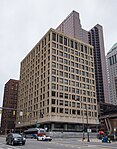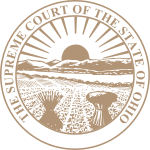Ohio Department of Education

The Ohio Department of Education (ODE) is the administrative department of the Ohio state government responsible for primary and secondary public education in the state. The Ohio State Board of Education is the governing body of the department and is responsible for overseeing the department. The board employs the Superintendent of Public Instruction, who runs the department. The department is headquartered in Columbus. The department is responsible for implementing standardized tests required by state and federal law, including the Ohio Achievement Test (OAT), Ohio Graduation Test (OGT), and the Ohio English Language Proficiency Assessment (OELPA, formerly OTELA). The State Board of Education does not have jurisdiction over higher education; Ohio's public colleges and universities are governed as part of the University System of Ohio by the Ohio Board of Regents and by the boards of trustees of each institution.
Excerpt from the Wikipedia article Ohio Department of Education (License: CC BY-SA 3.0, Authors, Images).Ohio Department of Education
South Front Street, Columbus
Geographical coordinates (GPS) Address Website Nearby Places Show on map
Geographical coordinates (GPS)
| Latitude | Longitude |
|---|---|
| N 39.961595 ° | E -83.002879 ° |
Address
Ohio Department of Education
South Front Street 25
43215 Columbus
Ohio, United States
Open on Google Maps











